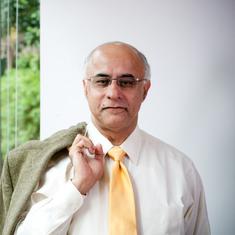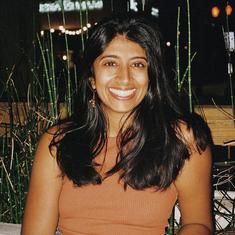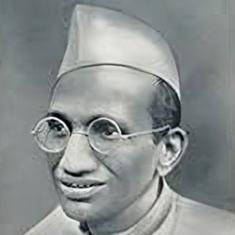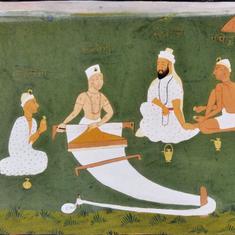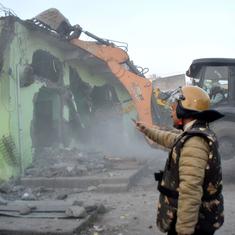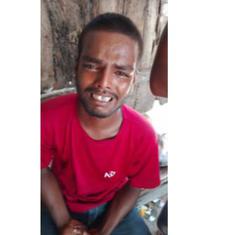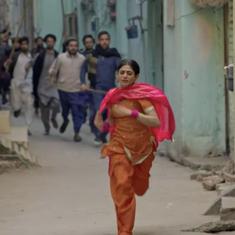Rakesh Bakshi: Was the story of your first film as director, Aakrosh, inspired from a true story?
Govind Nihalani: The story does not refer to any particular incident as such. It just reflected the state of socio-political affairs at that time. Vijay Tendulkar, the playwright and film writer, was researching for a Homi Bhabha Fellowship at the time and his subject was ‘The emerging patterns of violence as reflected in Indian theatre’. One day he narrated an incident to me that had taken place around Bhiwandi, Maharashtra. A man was found dead with an arrow wound; he was an adivasi. Another adivasi loitering around, or maybe just going about his regular day, was arrested as a suspect. What happened to this allegedly innocent man, I do not know, but the circumstances of the murder and how he was arrested impacted me. I felt sad that a poor man, who is uneducated, has no knowledge of the law, and has no means to access lawyers, has just no hope!
Your films are known for the actors’ performances. How do you create a good rapport with your actors? Do you conduct workshops before beginning principal photography?
GN: I love my actors. And every actor is unique and therefore there is no standard method of working with them. However, in my experience, I have realized that to get the best out of an actor, one thing that usually works the best for me is to push him or her out of their comfort zone. I try to persuade my actors to abandon their comfortable way, and attempt the difficult way in. And when they do that, the results are far more exciting.
For example, Om Puri. I had heard about two student actors, Om Puri and Naseeruddin Shah, from Girish Karnad, who had noticed their extraordinary talent while he was the director at FTII [Film and Television Institute], Pune. On the basis of his opinion, I suggested their names for two roles in a documentary that I was photographing for Mr Ram Mohan. While working on the documentary, I saw both of them perform, and I was very impressed by their talent. Later, when it came to casting the lead role of the young tribal Lahanya in Aakrosh, I thought of a couple of actors, but I was constantly visualizing Om’s face in the role. Ultimately, both Om and Naseer became part of Aakrosh, along with Amrish Puri and Smita Patil.
As for actors’ workshops, I have conducted them for some of my films. I have always believed in the principle I learned from my friend Satyadev Dubey; I would instruct the actors, ‘Read the dialogues during rehearsals, to get the attitude correct, but do not emote at this stage; the emotional element of the dialogue must be retained for the take.’ I firmly believe the actors must have something new to create in front of the camera, something he or she has not experienced in rehearsals before.
I have seen that many actors have the tendency to reduce everything to their level of comfort. Particularly the dialogue. Some do it out of mediocrity, or laziness, and some are forced to do it if the dialogues are not well written and do not flow when spoken. Speaking of the former kind, actors who suggest changes in dialogue because they do not want to make an effort, I tell them, ‘Let us together find a difficult way out of this situation you find yourself in. An easy way will not help us better the written word.’ When an actor leaves his comfort zone and finds a way out, the difficult way out, that is when the new energy arrives in his performance.
Do you feel you make movies to raise questions, or to give answers, or simply to tell stories?
GN: For me, cinema is not about just telling a story. For me, it is all about creating an intense cinematic experience, whatever the genre, and sharing it with the audience.
Farah Khan on Main Hoon Na
RB: Your first film brings together separated relationships and divided nations, symbolically.
Farah Khan (FK): In a subtle way the two separated stepbrothers, or half-brothers, played by Shah Rukh and Zayed, were symbolic of the two nations, India and Pakistan, coming together in peace someday. In a sense, the story was close to my own family, which I considered to be dysfunctional in some ways.
What was very strange was, much after Main Hoon Na released, I chanced upon the synopsis of a movie my father had made Apna Khoon Apna Dushman (1962). I was surprised that it was the same story as Main Hoon Na. In fact, I was shocked because I had not seen my father’s film! After I showed the synopsis of Apna Khoon Apna Dushman to Shirish [Kunder], my husband, he was forever pulling my leg: ‘See, I knew you had copied the story from somewhere.’
There was a dialogue, ‘Bees saal ke zakhm bees din mein bhare nahin jaate.’ Was it inspired from your life?
FK: No one receives a perfect family, but ours was grossly imperfect. My mother could not handle my father’s failure and eventually they separated. I have stepsisters from my father; after my brother was born, my father was more into his son. The scene in which Amrita Rao tells her father, ‘Every time I have tried to be a son’, is biographical in that I always believed I was no less than any boy. (Laughs) However, I did not make a tragedy out of my own feelings in the movie. The dialogue you mentioned, spoken by the mother, reflects my own life.
You are a woman director. Have you ever faced any bias?
FK: In this business there is no bias of any kind, no gender or religious discrimination. The movie business only seeks out talent and hits. That I think is fair since a producer, and even the next level of investors on your film – the distributors, the exhibitors – must earn back their investments, and that is why they are going by your film’s box-office success alone.
Santosh Sivan on Halo
RB: You were doing very well as a cinematographer, what prompted you to turn to direction?
Santosh Sivan: While I was thinking of directing my first feature film, I got many opportunities to shoot other films as a cinematographer, for which I would have also been paid very well but I refused them.
I loved making Halo even though I went through hell to make it. I had to borrow money for pre-production because the Children’s Film Society of India (CFSI) does not fund you like regular film producers or banks. I sacrificed a lot to make it at that time, as I feared if I did not make it then, I never would.
Who was the producer of your first film, and how did you get them to be on board?
SS: Children’s Film Society India produced my film. However, their approach is different from other private production companies. Nevertheless, it is not as difficult as you may think. Especially for students graduating from FTII, or for anyone who wants to make a film. Organizations like CFSI are run by people who recognize passionate and good film-makers. If you have someone, say, Mrs Jaya Bachchan, heading CFSI, you can meet her quite easily and narrate your story, as she is the one who will take the decision. They are in a position where they can do many things for you if they like your script and appreciate your talent. Of course, CFSI did not then have a great network to market the film, but at least the film could be made...
In my case, I wrote the script of Halo and sent it to them. They liked it and asked me how much it would cost, and if I was willing to invest some funds in my own film. I agreed. You do not have to fund it, but only to invest to fund it, and then they would reimburse you. I signed a few films as a cinematographer and got advance money. I had a fantastic bunch of kids with very eager parents and they were all very good to me. All this helped me make my first film.
You have worked a lot with child actors. What has been your experience?
SS: We did not have permission to shoot on the roads, so we had to be quick and get out of the location before the authorities spotted us. There was no time for more than one take or any discussions on performance during the shoot. So I did rehearsals with the children before the shooting; but you also have to flow with them.
One great thing about kids, which adult actors should learn from, is that kids have no inhibitions about how they look. They are only concerned with what they are supposed to do. So you should keep them excited and motivated. Children like to offer suggestions and I would always listen to them as they think out of the box. This one child would look in the camera and act, so I changed the script and made him look into the camera and say, ‘Someone is watching us.’
Excerpted with permission from Directors’ Diaries The Road to Their First Film by Rakesh Anand Bakshi, published by HarperCollins India.
